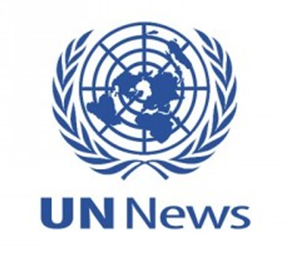More than 36 million are struggling to meet their basic food needs, which is projected to rise to over 52 million during the lean season from June to August, latest analysis reveals.
This includes almost three million people facing emergency conditions, and 2,600 people in Mali who are at risk of catastrophic hunger.
Although needs are at a historic high, resources are limited, with millions of lives at stake.
“Without immediate funding, WFP will be forced to scale down even further both in the number of people reached and the size of food rations distributed,” said Margot van der Velden, Regional Director for West and Central Africa.
‘Extremely difficult and dire’
In 2019, only four per cent of the population was food insecure compared to 30 per cent today, according to Ollo Sib, a senior research adviser with WFP.
“We hope that our voice will be heard because this food security situation in the Sahel remains extremely difficult and dire,” he said, speaking from Dakar to journalists in Geneva.
Mr. Sib recently travelled to some of the affected areas, such as communities in northern Ghana grappling with unprecedented drought.
“They were forced to replant two to three times, and for them, each failed sowing is an additional financial burden as the cost of fertilisers and seeds were extremely high in those locations,” he said.
The assessment team also went to northern Mali, which is the only place in the region where people are facing catastrophic food security conditions.
“We had the opportunity to interact with pastoralist elders who typically sell their livestock to buy cereals,” he said.
“This year they were worried because the cost of food rose by 50 per cent compared to the five-year average. But at the same time, they are not able to access markets to sell their goods.”
Fighting, food inflation and floods
WFP said unyielding conflict is among the factors driving deepening hunger in West and Central Africa.
Fighting has displaced more than 10 million of the most vulnerable people across the region, including more than two million refugees and asylum seekers, in Chad, Cameroon, Mauritania and Niger.
Nearly eight million more have been internally displaced, mainly in Nigeria and Cameroon.
Meanwhile, food inflation exacerbated by rising food and fuel costs are pushing hunger levels to new highs.
At the same time, recurrent extreme weather “erodes the ability of families to feed themselves,” WFP said.
Five million at risk
WFP stands ready to respond and scale up vital assistance in West Africa and the Sahel. The UN agency is seeking $710 million to support its life-saving operations through the end of October.
The aim is to reach almost 12 million people this year with critical assistance.
So far, teams have already reached three million of the most vulnerable including refugees, internally displaced people, malnourished children under five, and pregnant or breastfeeding women and girls.
The agency said that five million risk losing assistance unless urgent funding is found.
Address root causes
WFP also called for governments and partners to invest in sustainable solutions aimed at building resilience and reducing long-term dependency on aid.
Since 2018, the UN agency has been working with regional governments to address the root causes of hunger through a programme that has rehabilitated over 300,000 hectares of land to support over four million people in more than 3,400 villages.
Distributed by APO Group on behalf of UN News.


